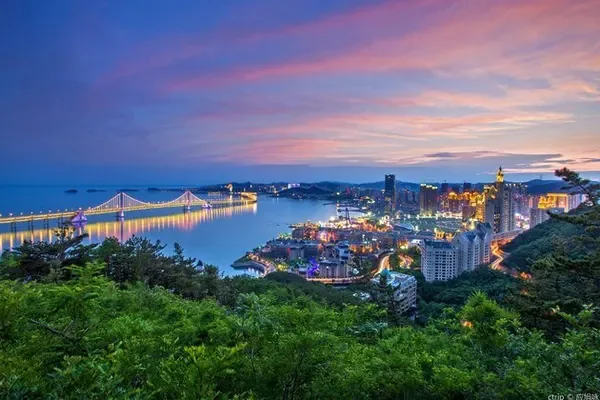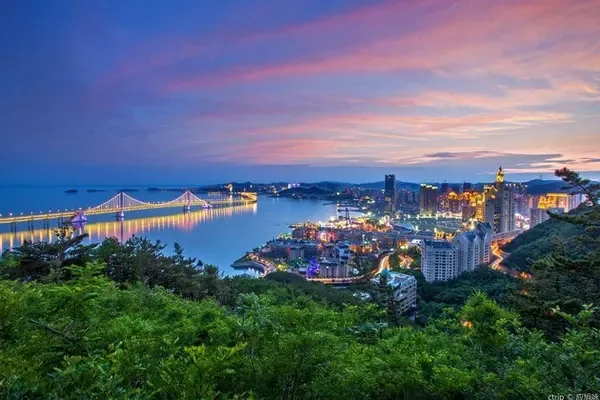
Just after dawn, we came out of Kashgar, and what we saw along the way was still like this:




The rolling hills are painted with light pink, pink and ocher red, and the emerald and green forests and grasses are set off, and the original blue sky is also set off by these colors at this time.






This is the scenery we saw when we went to Karakule Lake via National Highway 314. It is the color we saw when we looked up along the Gazi River Valley after entering southern Xinjiang; Seeing the splendor and roughness of southern Xinjiang, this feeling is still very deep.





After passing the Gazi border checkpoint, it should be said that we are already on the Pamirs. This place belongs to Akto County, and it is nearly 200 kilometers away from Kashgar. Due to the speed limit and inspection along the way, we spent more than four hours.

The 314 National Highway here is also called the China-Pakistan Highway, and further ahead is the Hongqi Lapp Port.





Karakul Lake is located next to National Highway 314. Whether it is going up the Pamirs from Kashgar or down the plateau from Taxkorgan, it passes here at noon. There are several bungalows and tents by the lake. This is the plateau tourism reception station, and it is also a permanent base camp specially set up for mountaineering enthusiasts from all over the world. It can provide them with board and lodging; we also had lunch here—tomato and egg fried rice , which is standard for all tourists here.


Standing here, you can see the peak of Muztag Iceberg when you look up.






We went to Karakule Lake along another road next to the China-Pakistan Highway, passing through Baisha Mountain. Most of the mountain cliffs here are colorful, or ocher red, or green, or iron gray, or orange. The bright and dazzling colors are colorful, as if they have been drenched with dyes. And with the different angles of light, these rocks will show different colors, especially in the morning and evening, bathed in golden sunlight, dreamy and magical, and the scenery is colorful.








I haven't seen Karakul Lake, and the scenery of this Baisha Lake is already amazing. Under the blue sky and white clouds, the continuous mountains are composed of white bases and ocher red peaks and foothills, which are reflected in the green lake water, which is both unreal and real.





Following the steps of walking forward, the mountains and mountains transition, and the water and water pave the way. The further you go, the bigger the water waves are, and the deeper the water color is.





The water of this white sand lake is surging with the wind, and the black water belt has white ripples from time to time. What's more, with the gorgeous and colorful mountains as the background, it is really strange and spectacular!





Looking at this Baisha Lake, it really gives people a dangerous impression. No wonder the Drifting Monk in the legendary "Journey to the West" used to fight monsters and catch monsters here.





Following the capture of my friend's camera and turning around a mountain road, we seem to have come to another world.



This is Karakule Lake! Clean and clear, clean as a mirror!

Look here, the camels are lying peacefully by the lake, waiting for the arrival of the next tourist; while the tourists are happily taking pictures on the grass by the lake. The rolling hills under the icebergs on the other side of the lake are shining in the sun, forming a beautiful picture with the emerald green at the foot of the mountains.




Karakule Lake, beautiful! It is amazingly beautiful! At the same afternoon, we turned here from Baisha Mountain on the other side of Baisha Lake. Even if there were no dark clouds, no lightning and thunder, the lake water would change color magically. Previously, Baisha Lake seemed to be filled with lead, black and white. The bright black water of the lake is now so gleaming, like the sky on the stage, constantly changing: sometimes blue, sometimes green, sometimes orange, giving people the feeling of being in a fairyland. Although geographically speaking, they are two different lakes; but the distance is so close, the performance is so different, it cannot but be said to be its strangeness. Of course, it may be the turbulence of Baisha Lake in front that brings out the calmness and purity of Karakul Lake in the back.



The depth of the Karakul Lake is more than 30 meters. Because of the deep and gloomy lake, it is named "Kalakul" (Kirgiz means black lake). Of course, most holy lakes have a sense of mystery, and there are also legends of water monsters here, which also adds a bit of charm to the scenic spots.




To the east of Karakul Lake stands the "Father of Glaciers" Muztagh Peak, while to the west is the majestic Sarkole Mountains; to the south of the lake is a grassland. The water is clear and the grass is abundant, the lake and the mountains are beautiful, the green grassland, and the white felt houses are dotted all over the place, reflecting the bright and clear iceberg reflections in the clear lake water, just like the ancient poem "the wind blows the grass and sees the cattle and sheep". Of course, the season is different at this time, and it is in the east, so these are completely invisible.
Even so, the scenery in front of you is enough to stop and admire.







Except for the pasture on the lakeside, there are no living things in the lake, especially the lake water will keep changing various colors throughout the day, which is confusing. Regarding the discoloration of Karakul Lake, folklore is that there are water monsters in the lake, and this legend has been around for more than a thousand years. Fa Xian, an eminent monk in the Jin Dynasty, and Song Yun, an eminent monk in the Northern Wei Dynasty, called it the "poisonous dragon pool". It is said that there are poisonous dragons in the lake. When Xuanzang, an eminent monk in the Tang Dynasty, passed by to learn Buddhist scriptures, he called it the "big dragon pool" where giant dragons appeared.
The water monster in Karakul Lake is the same as the mystery of the snowman on the Pamirs, both of which have left unsolved mysteries for tourists. Come to Pamir to explore the secrets, explore the secrets of the color-changing lake, and add endless reverie and fun to tourists.






Looking at this scene, I can't help but think of the scene of looking up at Namtso Lake in Tibet more than ten years ago. There is also the background of snow-capped mountains, the clarity of lakes, and the background of blue sky and white clouds; more devout tourists stop and look at it. In fact, the reason why such a picture is easy to associate is precisely because of the feedback from the person involved to purify the soul and sublimate the spirit.


This trip around Xinjiang, it should be said that the most beautiful lakes in Xinjiang have been visited once. In terms of ranking, this Karakul Lake may not be as good as Sailimu Lake or Kanas Lake, but its purity, its illusion, and its background, in my opinion, will never lose to the former. What's more, as an alpine lake, it is located in the Pamirs, which itself highlights its magnificence; moreover, it is set off by the adjacent Baisha Lake and Baisha Mountain, which strengthens its unique business card of holy lake and clean water.

goodbye! Karakule Lake!

